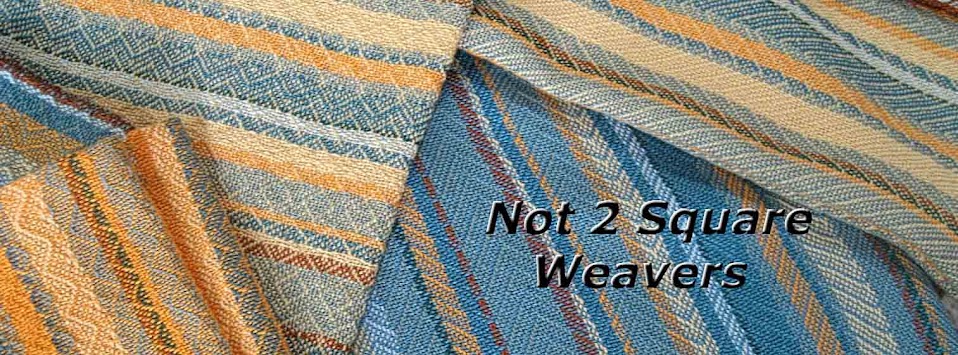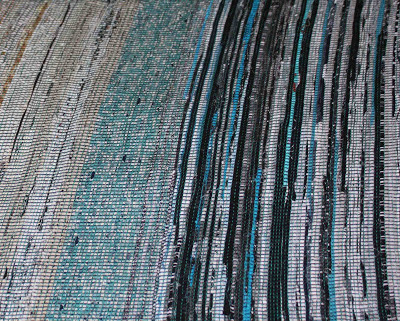The June meeting was a little sparse of attendees, but not of things to be shared.
 Sue Robertson showed us the
results of her class work at CNCH 2013 at Squaw Valley. She took Marilyn Romatka’s Viking Knitting
class and created a beautiful necklace.
This technique is also called “Viking Chain Knitting” or “Viking Weaving”
but isn’t really knitting.
Sue Robertson showed us the
results of her class work at CNCH 2013 at Squaw Valley. She took Marilyn Romatka’s Viking Knitting
class and created a beautiful necklace.
This technique is also called “Viking Chain Knitting” or “Viking Weaving”
but isn’t really knitting.
She also took Wendy Patrucco’s Cyanotype
Printing class and created two
different printed pieces of fabric and a printed canvas bag.
The third class was Knotted Button
Covers with Mushroom Dyed Silk taught by Gayle Still. Her button was about half finished.

 Marcy showed us a table runner
she wove as a challenge to use linen.
The warp was 8/2 white cotton and the weft the blue linen shown in the
picture. The design is an M’s & O’s
pattern on 4 shafts.
Marcy showed us a table runner
she wove as a challenge to use linen.
The warp was 8/2 white cotton and the weft the blue linen shown in the
picture. The design is an M’s & O’s
pattern on 4 shafts.
She used a blue floating selvedge that created a very neat edge for the piece.
Betsy is working on a five-piece collection of wall hangings/shawls that represent the four elements and the moon. She has been working on the water element. She showed us a shawl woven with tencel in an 8-shaft shadow weave pattern. There are different color blue warp stripes with silver and blue as weft.
Here is some detail of the shawl. It is very reminiscent of water.
Betsy also showed us a sample where she played around with a black weft that was woven in treadle order. It is really quite striking.
Betsy has started working on ideas for the earth piece. She brought a sample of what the structure of the piece will look like. This one was woven with 5/2 cotton.
Finally, Ingrid showed two lap robes woven with local llama yarn. These were done in 3/1; 1/3 twill stripes.
She also showed us her latest sock yarn scarf - merino wool and nylon yarn.















































